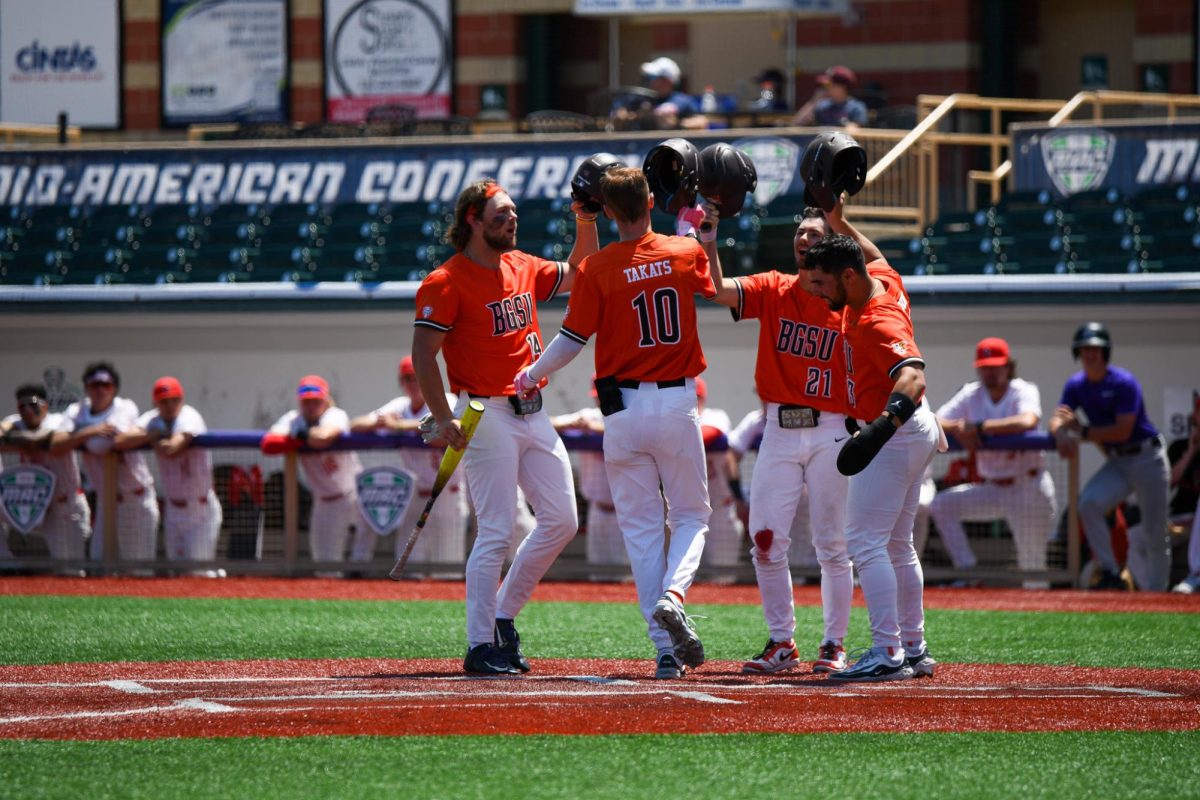KRT NEWSFEATURES By Mike Wendland Knight Ridder Newspapers (KRT) EAST LANSING, Mich. _ On a recent Wednesday afternoon, four Michigan State management students gathered around computers in cramped cubicles on the third floor of Berkey Hall. Their mission: to lead the United States in war. “What the . . . ?” muttered one member of the team, a woman named Kristi, as the computer showed a U.S. position being overrun by the enemy. “Ouch. This is not good,” said another student, Jake, after ordering a jet fighter under his control to take out what he thought was an enemy tank. It turned out to be a civilian vehicle. The students were playing a computer game _ but not some fantasy shoot-’em-up for Xbox or PlayStation. This was close to the real deal, a declassified but closely monitored simulation in which students help the Navy test how its combat strategies hold up under the stress of battle. During the past 12 years, hundreds of MSU business students have played the exercise as a class project. The results are compiled and sent back to the Office of Naval Research, which uses them to assess command and control procedures. If the United States winds up going to war with Iraq, researchers say that what happens in the air and on the battlefield will likely be shaped in part by what the military learned in a nondescript computer lab in East Lansing. “We assign a very high priority to this,” said Gerald Malecki, the project officer in charge of the MSU research at the Office of Naval Research in Arlington, Va. “They’re giving us the kind of technical expertise we need to rapidly respond.” Malecki, who is assigned to the naval research office’s cognitive and neural sciences division, says modern warfare revolves around communications networks and instant communication among a wide range of military teams aboard ships, in the air and on the ground. The MSU project helps military planners figure out how those teams function when linked together by satellite, voice and data networks and what leadership qualities are best suited to lead them. “Wars are not fought by computers. They’re fought by people,” said John Hollenbeck, a management professor who runs MSU’s Team Effectiveness Research Laboratory. “This helps the military find out how people are most likely to respond in the stress of a battle.” MSU is the only nonmilitary university authorized to use the Navy’s simulation software. Hollenbeck had to get security clearance from the government to run the experiments. The studies began as a result of another crisis involving Iraq. In 1987, the Navy frigate USS Stark was hit by two Iraqi missiles fired in what was apparently a case of mistaken identity during the Iran-Iraq War. Thirty-seven sailors died. The next year, a U.S. warship in the Persian Gulf mistook an Iranian civilian jetliner for an attacking fighter plane and shot it down with a heat-seeking missile. Iran said 290 passengers were killed. Those incidents convinced officials that they needed to improve the military’s command-and-control structure. Because Hollenbeck is a well-known expert in organizational dynamics and group psychology, the Pentagon sought him out for consultation. He wrote a research proposal, which the Navy approved, and MSU has been at it ever since. “What we offer here is volume,” Hollenbeck said. “When you run 600 students a year through this, you get some very strong data on how organizations and teams can best function.” The exercise looks more like the Space Invaders game of the 1970s than today’s razzle-dazzle videogames. Sitting in front of a green computer screen divided into four quadrants, students tried to defend their territory and counterattack an ever-advancing enemy force, represented by slowly moving blinking cursors. At the center of the screen was a restricted area that needed to be protected by the team. Each student was responsible for one of the quadrants, and controlled surveillance planes, tanks, helicopters or jets. Their job was to identify the blinking cursors that crawled across the screen toward their restricted zone and, using keyboard commands and the mouse, take them out before they could penetrate it. As the game began, the students quickly became frustrated when they couldn’t stop an attacker or when one slipped through someone else’s quadrant. Brows furrow. “Damn,” said another of the foursome, a young woman named Sara, as one of the enemy cursors got past her guarding tanks. Ten minutes into the 30-minute session, the fourth player, Joe Osentoski, 21, a finance major, got the students talking to each other. “Somebody say something,” he pleaded. “We need information.” Gradually, the others responded to his prodding. The four players coalesced into a team, sharing information, seeking help, alerting each other when an attacker was sneaking up behind them, offering suggestions on how to counterattack. When the game ended, the four, working together, cleared their area and repelled most of the invaders. “I thought this would be pretty lame,” said Osentoski. “But it got real intense real quick. We learned we had to cooperate and use one person’s strength to compensate for another’s weakness. If we didn’t work with each other, we were history.” Results of the MSU simulations get further testing by real military commanders playing top secret and much more accurate versions of the software at the Naval War College in Rhode Island. Those results then get tweaked some more and used in full-scale war games conducted by hundreds of sailors, soldiers, Marines and Air Force personnel. “The Navy figured that they could learn command and control strategies from the business world,” said Hollenbeck. “We’ve helped them understand the psychological factors that come into play when teams are structured in different ways and have to respond to different situations using advanced technology.” ___ ‘copy 2003, Detroit Free Press. Visit the Freep, the World Wide Web site of the Detroit Free Press, at http://www.freep.com. Distributed by Knight Ridder/Tribune Information Services.


Follow us on social
- Children of Eden written by Joey GraceffaBy: Destiny Breniser This book was published in 2016 with its genre being Young Adult, Dystopian, and Apocalyptic. This story is about Rowan, who is a second-born child living in a city where her entire existence is illegal. She longs for the day when she can leave her family’s house and live without fear. She […]
- An Unwanted Guest written by Shari LapenaBy: Destiny Breniser A classic whodunnit that keeps you guessing till the very end. With twelve characters to read varying points of view from, there is always something happening to leave you wondering what is going on. This book was published in 2018 with its genre being a mystery thriller. The story starts with Reily […]

July 25, 2024

July 24, 2024

July 23, 2024
Business students testing combat strategies for Navy
February 25, 2003
Leave a Comment
Donate to BG Falcon Media
$1410
$1500
Contributed
Our Goal
Your donation will support the student journalists of Bowling Green State University. Your contribution will allow us to purchase equipment and cover our annual website hosting costs.
More to Discover













